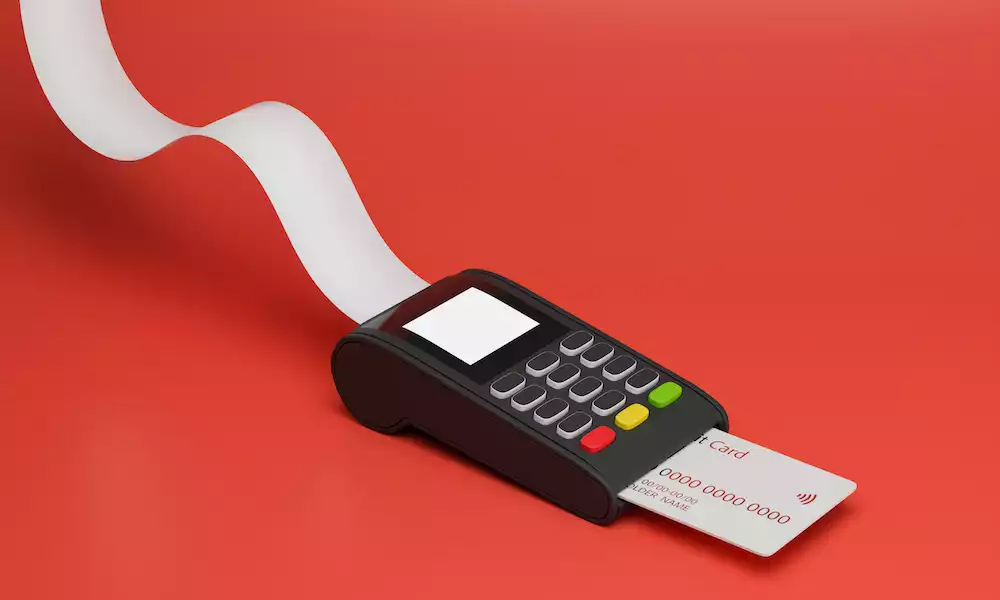Accounting & Finance
A Guide To Taking Card Payments

In today’s digital age, accepting card payments has become essential for businesses of all sizes. With the rapid advancement of technology and the changing preferences of consumers, it is crucial for business owners to adapt and offer convenient payment options.
Even for those who may not be technologically inclined, embracing card payments has become a necessary step in staying competitive and meeting the needs of customers.
In this guide, Rapid Formations explore how your business can effectively implement card payment solutions, whether you operate online, in-store, or on the move. Let’s get started.
What are the benefits of accepting card payments?
In the post-pandemic landscape, cashless and contactless payment options have fast become the preferred payment option for consumers who value a convenient, quick and more secure payment process.
Accepting cards within your business carries a host of benefits, from increased sales to enhanced security and clearer data insights, that could prove significantly valuable to your marketing efforts and business development.
Card payments will not only positively impact profits, but also your business image, elevating your credibility, professionalism and customer satisfaction.
Determine how you want to accept card payments
There are three main ways you can choose to accept card payments, each depending on how your business operates:
Card machine
A card machine, also known as a PDQ (Process Data Quickly) machine or Chip and PIN terminal, is predominantly used for face-to-face payments in stores, pop-up shops, markets or any physical sales environment.
Some card machines can also process card-not-present payments for transactions where the customer is not present, for example over the phone, via email or post.
Customers tap or insert their cards into the machine, and enter their PIN or provide a signature for verification.
Payment gateway
A payment gateway is an online service that facilitates card payments on your e-commerce website or online store.
When customers make a purchase online, the payment gateway securely processes their card details and transfers the payment to your merchant account.
Payment gateways are ideal for businesses that operate mainly in the digital space and require a secure and seamless online payment solution.
Virtual terminal
A virtual terminal is a secure online payment processing platform allowing customers to pay over the phone. Businesses can manually enter the customer’s card information on their behalf, including the card number, expiry date, CVV number, and billing details.
Virtual terminals are typically used by businesses that operate in industries where in-person card transactions are not feasible or by those that offer customer support for payments over the phone.
Research merchant account providers
No matter how you accept card payments, setting up a merchant account is highly recommended.
A merchant account is a special type of bank account that allows you to receive card payments securely and efficiently. Your bank will provide a merchant ID that links to your card machine.
Setting this up will enhance the customer experience and enable greater cash flow management since money is digitally transferred instantly, allowing for faster settlement times.
Merchant accounts provided by banks incur fees depending on the volume of card transactions you take each month. They usually offer contracts and fixed monthly fees to cover costs like PCI (Payment Card Industry) security standards.
When researching, you should look for well-established companies and compare the fees and transaction rates offered by different providers to identify the most cost-effective solution for your business.
How to take card payments with a card machine
If you are operating a physical business and most of your payments occur face-to-face, then a card machine is likely the most suitable option for you.
You’ll need to decide whether you want to use a traditional card reader (also referred to as a PDQ machine or Chip and PIN terminal) or a mobile card reader.
Traditional vs. mobile card readers
Banks and larger payment facilitators, such as Worldpay, usually supply traditional card machines. They can only be used with an Internet connection and are best suited to businesses operating from a fixed location.
Mobile card readers are often supplied by payment facilitators such as PayPal or SumUp, and can process contactless and Chip and PIN payments anywhere with a WiFi connection, 3G or 4G connection, or a SIM card. They are, therefore, ideal for pop-up shops, businesses without a stable Internet connection, and businesses on the move who attend markets, festivals, and events.
Integrate with your POS
If you have a point-of-sale (POS) system, you’ll want to integrate the card reader to streamline payment processing. This is usually straightforward to do, and your payment facilitator will be able to support you with any setup requirements. Once setup is completed, all transactions will be processed through the software, providing data insights on your payments.
Accepting contactless payments
Most customers will likely choose to pay using contactless card payment, now a standard feature on all card machines. This one-tap method can significantly reduce waiting times and queues, boosting customer satisfaction.
The current contactless limit in the UK is £100. For more than £100 transactions, the customer will need to insert their card and enter their PIN.
How to accept card payments online
Accepting payments online will require the integration of a payment gateway to your e-commerce platform.
Payment gateways provide a secure means to charge cards to you, the business owner, or the merchant, if you have set up a merchant account as recommended above.
You’ll need to select a payment gateway and create an account to start with integration. Some popular payment gateway providers include Stripe, PayPal, and Payline. Each offers different features and varying fees, so it’s important to do background research and select the payment gateway that best suits your business needs and size.
Once you create your account, you’ll be given instructions to complete the necessary verification processes and setup on your site, enabling customers to securely enter their card details during checkout.
You can tailor your payment gateway to offer various card and payment options, such as credit, debit, and mobile wallet solutions like Google Pay and Apple Pay. It’s essential to thoroughly test the payment process once set up to ensure everything works smoothly.
How to take card payments over the phone
To accept card payments over the phone, you will need a virtual terminal with the same functionality as a card machine, except without the physical card reader.
Instead, you will manually input your customer’s card credentials into a secure online platform.
The setup process is very similar to a payment gateway. You must first research and select a provider that aligns with your business needs and offers the required features.
Again, choose a reputable processor like Stripe, PayPal or Worldpay. If you use more than one card payment method, selecting the same provider is helpful to make management and data more streamlined.
You will then need to create an account if you don’t have one already and follow the verification processes to get started. It’s worth noting that since virtual terminal card payments are defined as card-not-present payments, payment processing companies will charge more to process these transactions.
Wrapping up
So there you have it, a guide from Rapid Formations on accepting card payments. We hope you’ve found this post useful and that it’s helped confirm the benefits of taking card payments and clarify the different methods available.
Whether you’re a small startup, an e-commerce store, or a business on the move, you can’t take advantage of the additional sales that card payments can generate.









